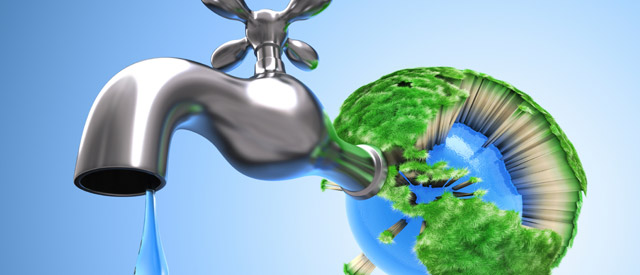 How much water is used for irrigation in European agriculture?
How much water is used for irrigation in European agriculture?
Agriculture plays a large role in the management of water in the EU. However, there is little consistent information on water use in irrigation. New EU supported research has estimated how much water is used for irrigation in European countries, providing a framework to analyse agricultural pressures on water quantity.
Water scarcity is an increasing problem in the EU and the situation is expected to worsen with climate change1. Agricultural irrigation accounts for substantial water use, although it varies with region. In the Mediterranean, irrigation accounts for more than 60 per cent of total water use, whereas in Central and Northern Europe it accounts for just 1 per cent. However, information on water use by irrigation tends to be inconsistent and varies by country.
The research, conducted by the European Commission Joint Research Centre2, used the crop growth model EPIC (Erosion Productivity Impact Calculator)3 to estimate European crop irrigation requirements. The model covered the EU and Switzerland in 10km x 10km grids. Data on weather, soil, crop management and land use were used in the model.
Irrigation requirements were calculated for five irrigation strategies. The irrigation strategies irrigation strategies varied from keeping soils always water-saturated to no-irrigation (rain-fed crop growth). The model was run from 1995 to 2002.
As would be expected, water irrigation requirements varied with strategy. Net irrigation requirements were highest in the Mediterranean and lowest in the boreal or Northern crop region. Crop yields varied with irrigation strategy and the variation was greatest in the Mediterranean where the yield dropped by 80 per cent when a no irrigation system was compared with optimal irrigation conditions. However, the results indicated that exceeding a certain level of irrigation did not substantially increase yields, suggesting that additional irrigation should be avoided, or that less water use may save water resources with only small losses in crop yield. This emphasises the value of careful planning and management.
An optimum irrigation strategy that balanced irrigation needs and crop yield was applied to obtain irrigation requirements for each area. The results were then averaged nationally to produce annual figures that ranged from 53 litres per m2 of irrigated land in Denmark to 1120 litres per m2 of irrigated land in Spain. However, likely inefficiencies in transport and irrigation management mean that in reality the figures could be 1.3 to 2.5 times higher.
When compared with figures of reported water use, there were large discrepancies. For example, reported data for Italy corresponded reasonably well to simulated data, but reported irrigation in Italy was about 900 litres per m2 higher than in Spain or Greece. This is unexpected because both Spain and Greece have more severe climatic conditions. The study suggests several reasons for this, including the illegal and unreported use of water for agriculture in Spain.
The research provides good estimates of irrigation requirements at a high spatial resolution and calculates them consistently across countries. Future improvements should focus on defining different agricultural soils in Europe as soil type has a large influence on irrigation needs. The researchers suggest that the framework will help develop indicators of water stress and identify hot spots of high water use.
- See http://ec.europa.eu/environment/water/quantity/scarcity_en.htm
- See http://ec.europa.eu/dgs/jrc/index.cfm
- See www.epa.gov/nrmrl/pubs/600r05149/600r05149epic.pdf
| Contact information |
Email: gunter.wriedt@gmx.de |
|---|---|
| News type | Inbrief |
| File link |
http://ec.europa.eu/environment/water/quantity/scarcity_en.htm |
| Source of information | Wriedt, G, Van der Velde, M., Aloe, A. & Bouraoui, F. (2009). Estimating irrigation water requirements in Europe. Journal of Hydrology. 373:527-544. |
| Keyword(s) | water scarcity, climate change, irrigation |
| Subject(s) | AGRICULTURE , POLICY-WATER POLICY AND WATER MANAGEMENT , RISKS AND CLIMATOLOGY , WATER DEMAND |
| Relation | http://www.semide.org/topics/agriculture |
| Geographical coverage | Europe |
| News date | 02/10/2009 |
| Working language(s) | ENGLISH |
 you are not logged in
you are not logged in





